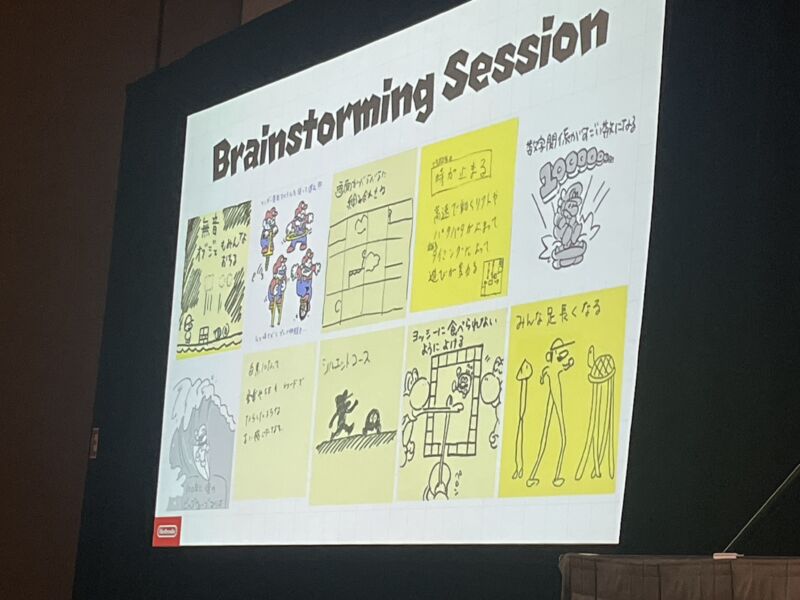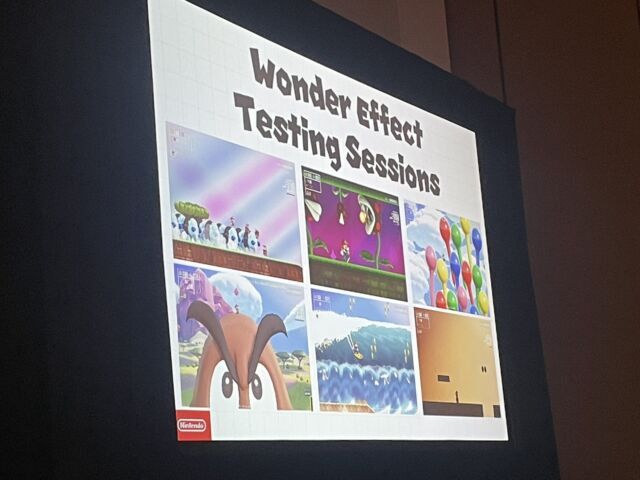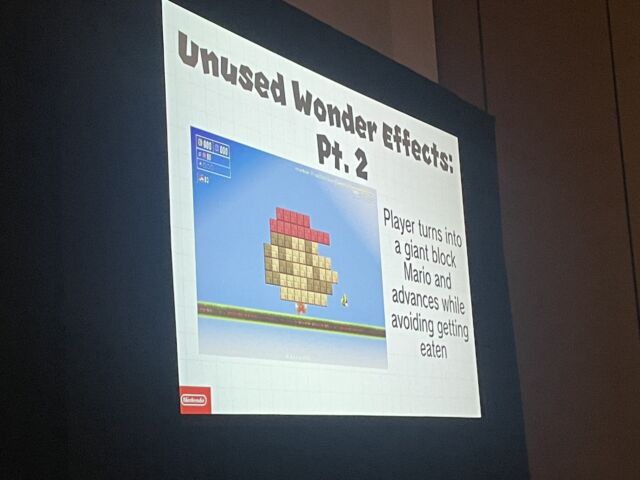
SAN FRANCISCO—When thinking about what makes 2D Mario games special, Super Mario Bros. Wonder director Shiro Mouri recalled the excitement he felt playing the original Super Mario Bros., discovering things like the warp zone and hidden vine blocks for the first time. Across decades of 2D Mario games with similar designs, though, it has been harder and harder to make a game that feels like it's "full of secrets and mysteries," as he said during a Game Developers Conference presentation this week.
"At some point, all of this has become normal," Mouri said of once-fantastical Mario game elements like mushrooms and coin blocks that have now become staples of the games.
Recapturing a world full of "secrets and mysteries" was the guiding principle for the development of Super Mario Bros. Wonder, Mouri said, but it took a while to figure out the new perspective necessary to get to that point. When Mouri prototyped an item that warped Mario to a new location, for instance, producer Takashi Tezuka said the effect "isn't so different from how it's always been. What if we changed the environment instead?"
That idea seemed to unlock something in Mouri, leading directly to levels full of singing piranha plants, wiggling warp pipes, and much more. "Well, if I'm going to change the environment anyway, I might as well go hard," Mouri said of his thought process.
Thousands of ideas
During the development of Super Mario Bros. Wonder, Mouri said the development team created about 2,000 initial ideas for different Wonder Effects. These ideas could be submitted on sticky notes by anyone on the development team, regardless of job title or responsibility. "At Nintendo, we believe everyone is a game designer," Mouri said.

Only a select handful of those ideas made it to the prototype-testing phase, Mouri said, and less than half of those prototypes made it to the final game. In one rejected prototype shown on stage, Mario found his head transformed into a set of colorful, pixellated bricks, which a swarm of flying Gnawshers quickly tried to devour. While the idea had "good visual appeal," Mouri said, the sheer size of Mario's head made it difficult to avoid the enemies and resulted in a simple mad dash to the finish.
AdvertisementThe best gameplay ideas had some link between the "pre-Wonder" level and the "during Wonder" effect, Mouri said. A Wonder Flower that suddenly turned Mario into a balloon, without warning, "would feel unnatural," Mouri said. But adding balloon-esque enemies earlier in the level primes the player for that kind of effect and makes it feel more natural.

Effects that could be described as one short phrase also had a better chance of making the cut, Mouri said. One such idea came from a first-year employee, who simply wrote, "A Wonder Quiz Starts" on a sticky note with no additional context. This eventually became the game-show style multiple choice trivia exam in Fungi Mines. "I don't believe this is an idea I would have ever come up with," Tezuka said. "I believe this is what's interesting about creating play with other people."
Not everyone is a designer
While 3D games have taken to the forefront these days, Tezuka and Mouri said that 2D game development still brings some advantages. In 2D games, for instance, you don't have to worry about the camera getting caught in obstacles as the player moves around. That means you can focus on "the core of play" Tezuka said, and it makes it much easier to make adjustments and add news elements "right up to the end of development."
But that doesn't mean it's necessarily easier to make a good 2D game. Tezuka recalled a conversation with Mario creator Shigeru Miyamoto in which they discussed whether or not just anyone could make games in 2D. The release of the Super Mario Maker series helped settle that question. "When we play the posted courses... some of them were not very good," Tezuka said in what could be seen as a huge understatement. That kind of crowdsourced experiment helps show that, even if design elements like controls and enemies are solid, "whether they come alive or fall flat are dependent on the level designer," Tezuka said.



















